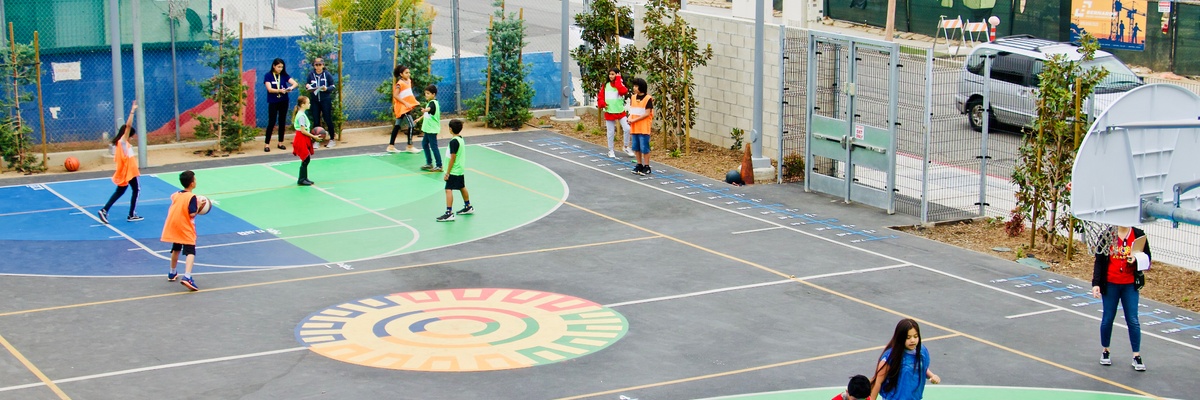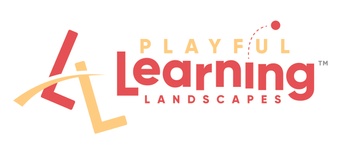Fraction Ball is the latest offering from Playful Learning Landscapes that promotes playful, physically active, embodied math learning. By repainting the lines on a standard basketball court, children must add fractions and decimals and convert between fractions and decimals to score points for their team.
The traditional 3-point arc is converted into a 1-point arc and smaller arcs closer to the basket represent 1/4, 1/2, and 3/4 point shots on one end of the court, and 1/3 and 2/3 point shots on the opposite end. The numbers are presented as fractions on one side of the court and as decimals on the other side, requiring students to convert between them. Along the side of the court, a number line with both fraction and decimal representations helps students keep track of their score.
Students who played Fraction Ball as part of their Physical Education class as a supplement to classroom math lessons made significantly greater gains in converting fractions to decimals, decimals to fractions, and other related skills, like adding fractions and decimals.
Fraction Ball, like all Playful Learning Landscapes, uses a 3-part design formula:
1. How Children Learn
Meaningful
Actively Engaging
Socially Interactive
Iterative
Joyful
2. What Children Learn
Communication; Content; Critical Thinking; Creative Innovation, Confidence, Collaboration
3. Community Values
A successful design will incorporate all 5 qualities of HOW children learn, and at least 1-2 of the 6C’s that define the learning goals, or WHAT children need to learn to flourish. Fraction Ball incorporates all 6C's: Collaboration and Communication (children play structured games on teams to pursue different goals), Content (fractions, decimals, arithmetic, number lines), Critical Thinking (strategizing what shots you need to reach your goal the most efficient way), Creativity (making up new games/goals using the court, e.g., adding in a ball that multiplies all shots by 2), and Confidence (engaging with fractions and decimals in a playful approaches improves confidence when they encounter them in the classroom).
Lue vähemmän...



